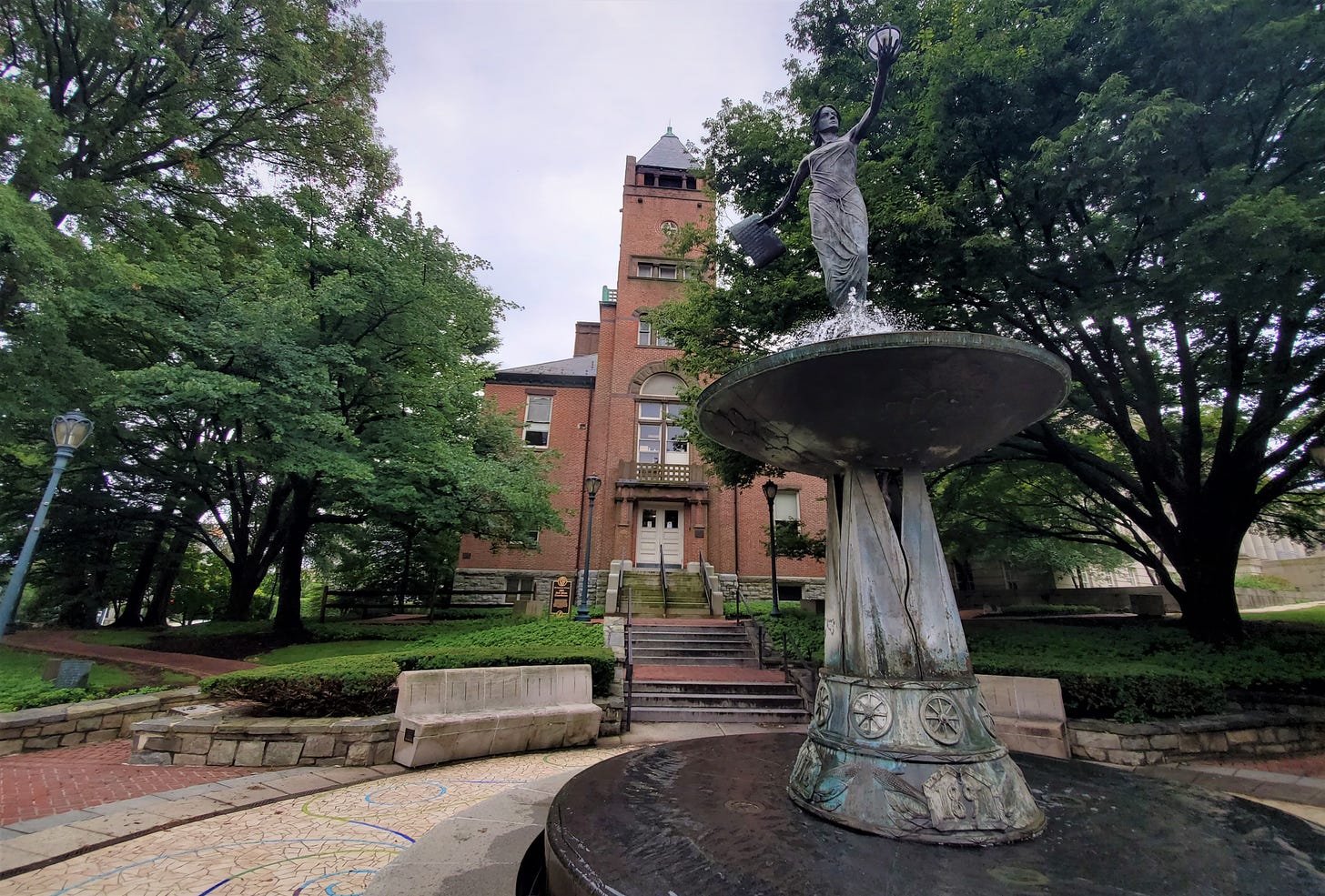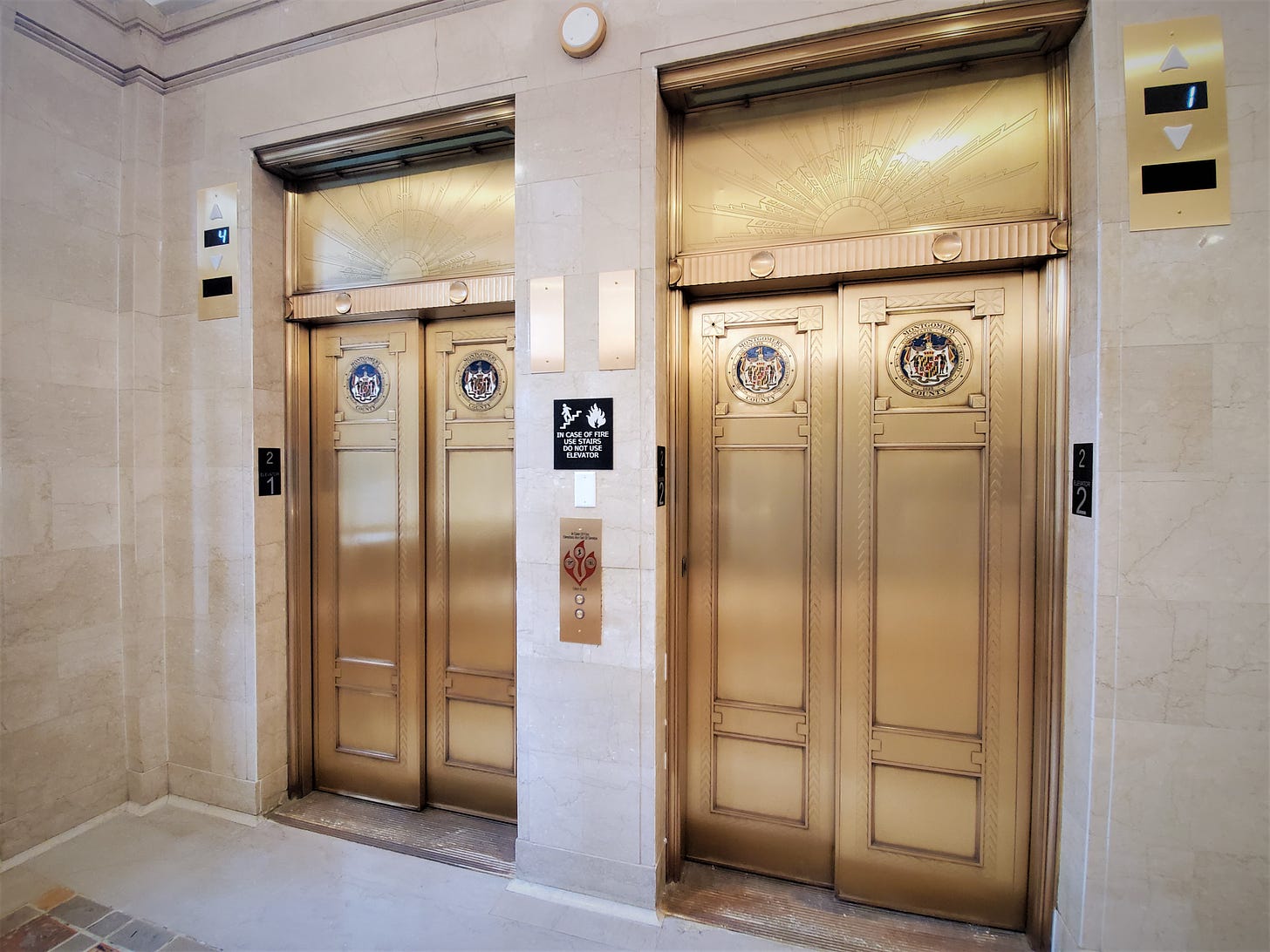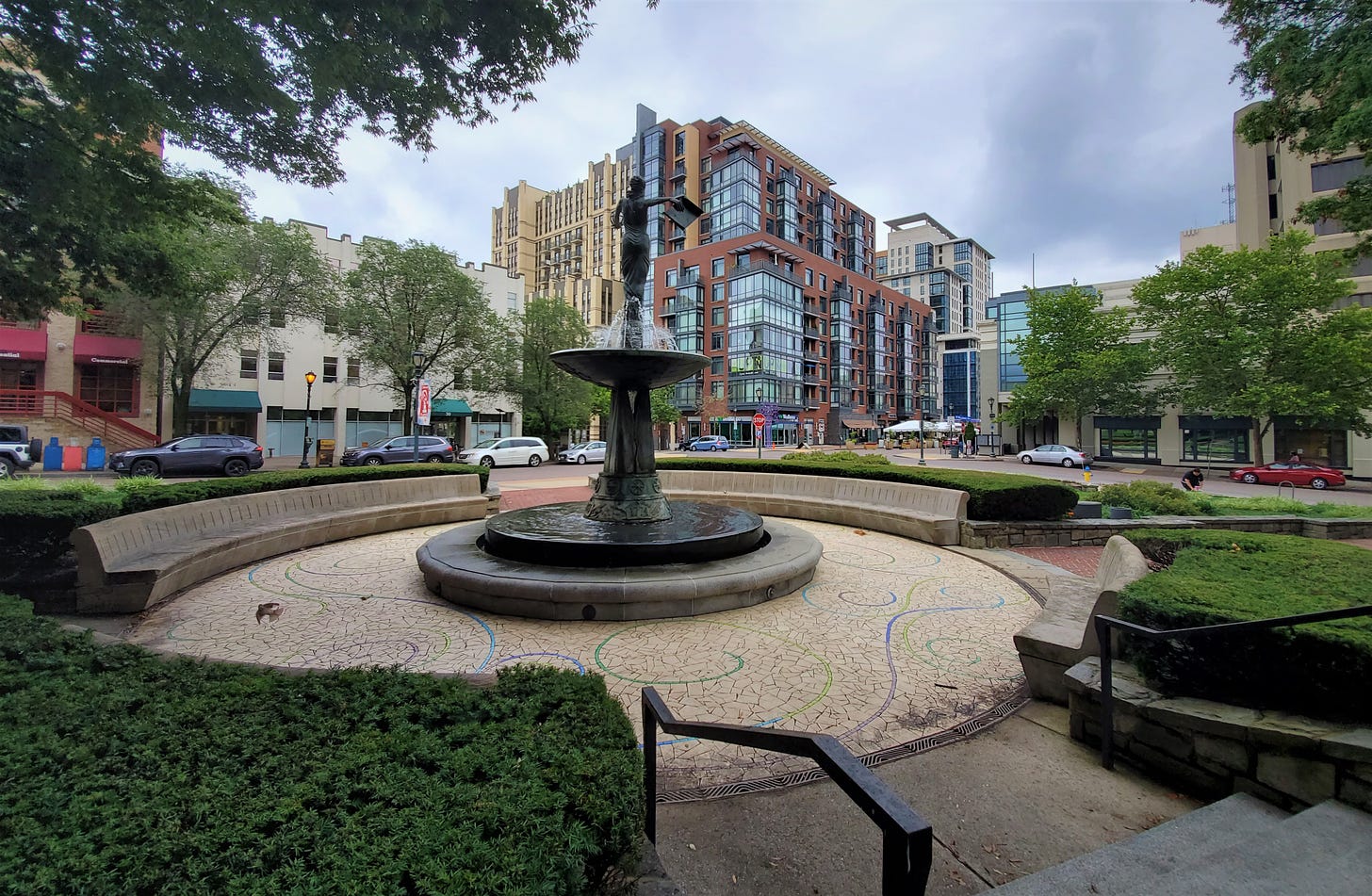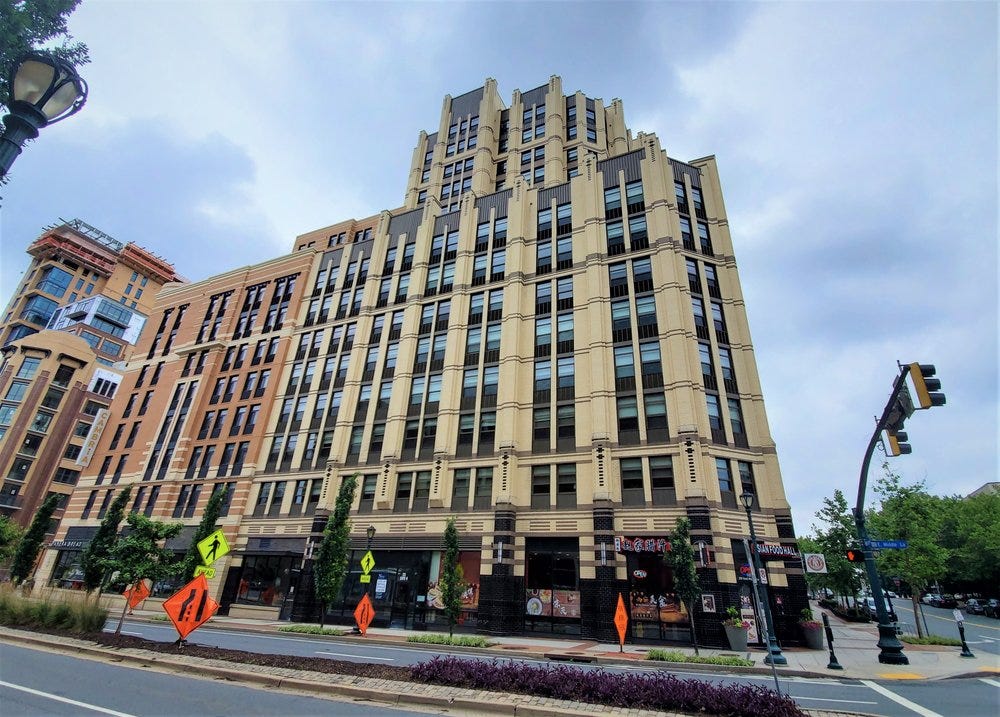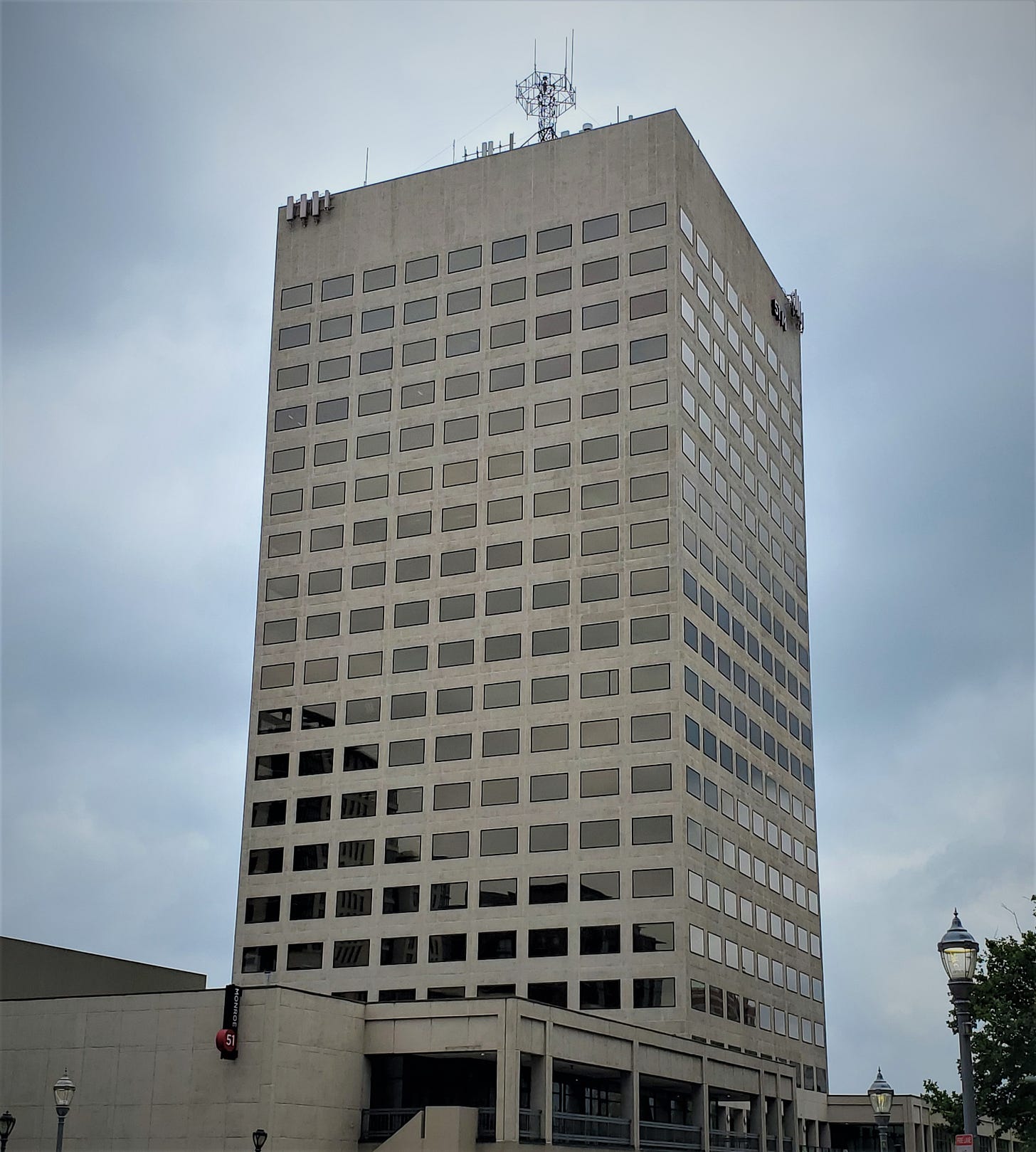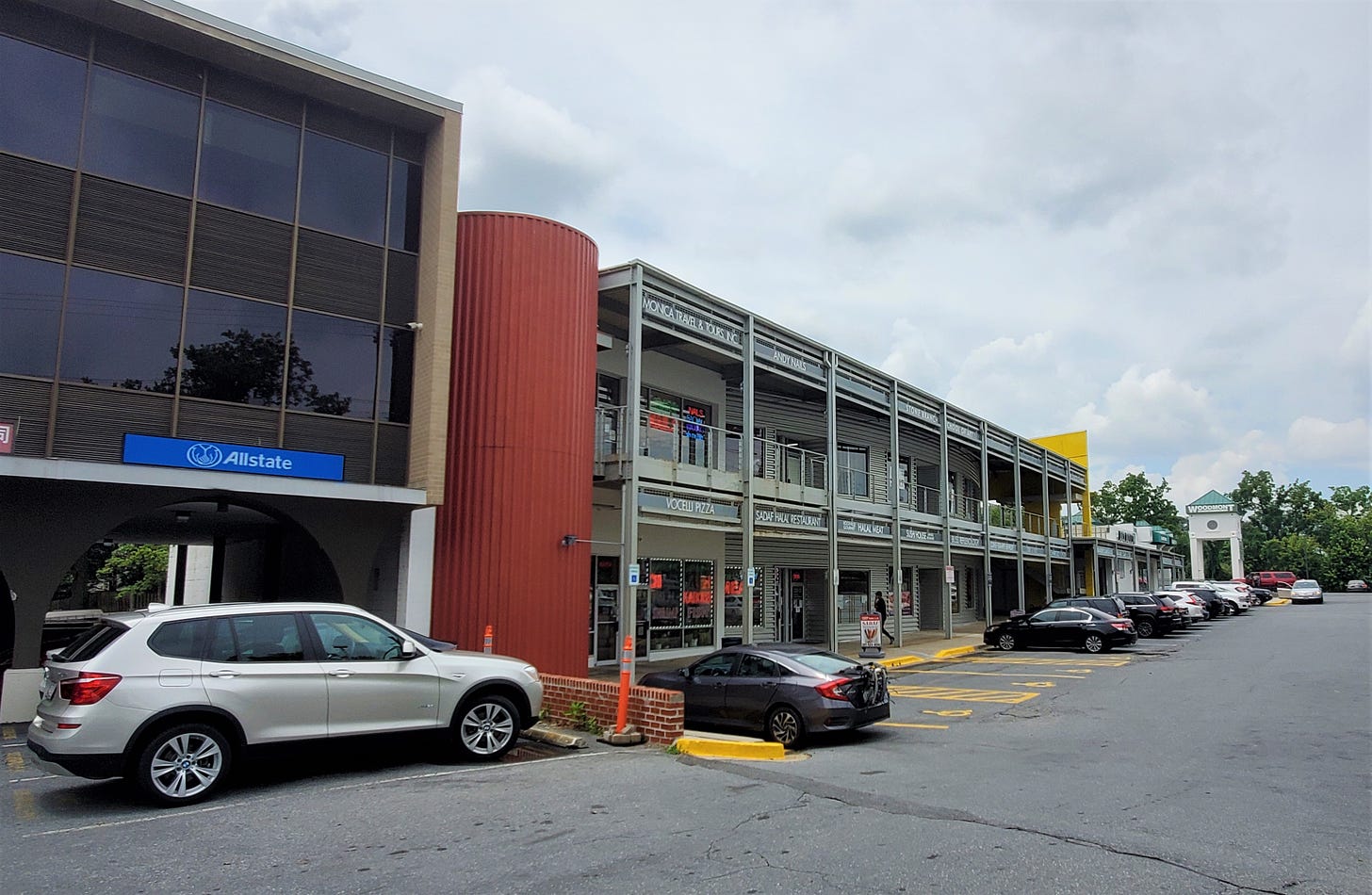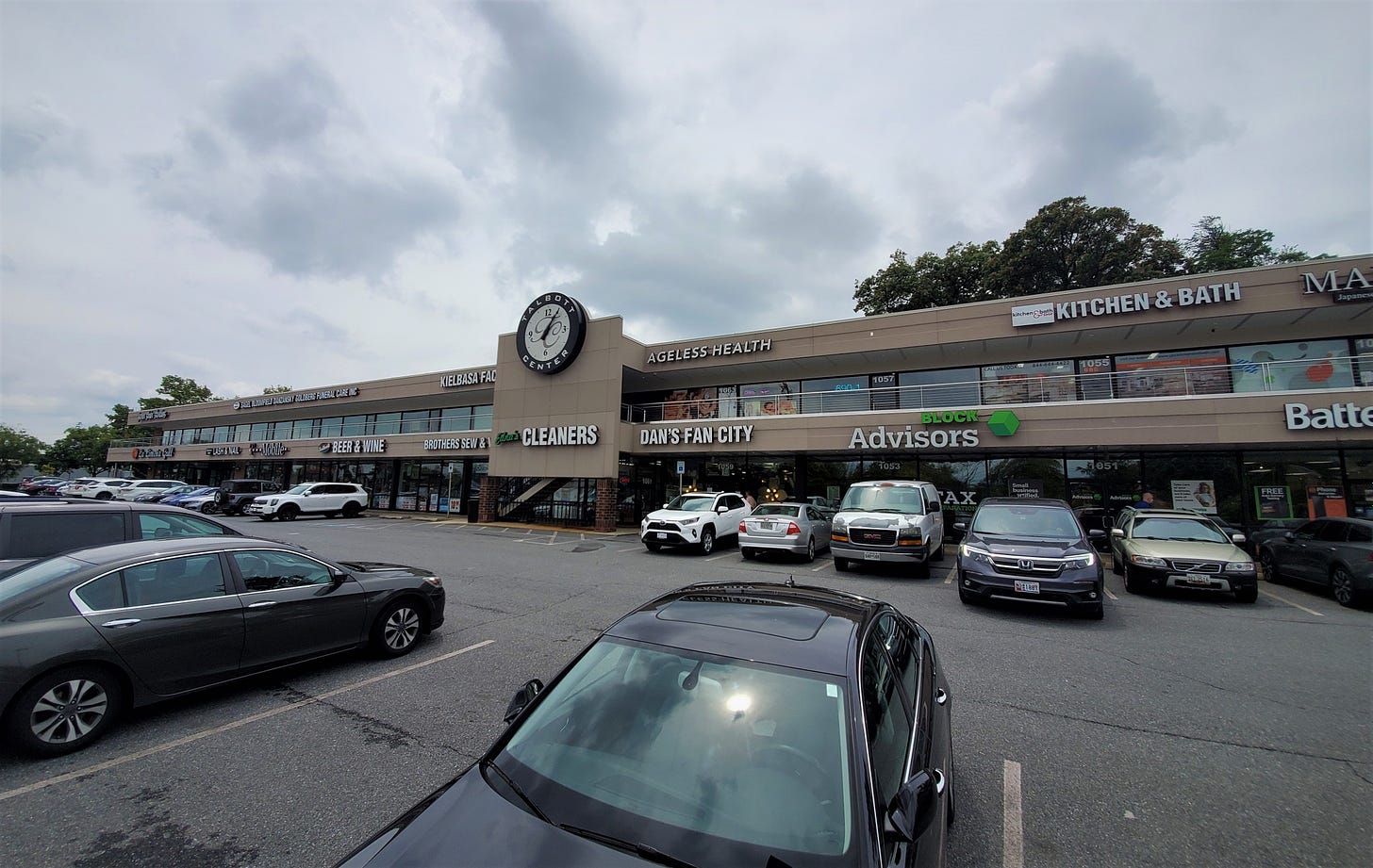A Little More on Rockville Pike
A few miles of suburban Maryland are a compendium of America's urban history
I recently wrote a two-part series—here’s part 1 and here’s part 2—for Strong Towns on Rockville Pike, a major commercial corridor in Maryland’s Montgomery County. The area is part of the D.C. suburbs, though as I detail in the articles, it’s seeing a transformation from low-rise sprawl to denser and more urban development.
This is a big change from the area’s status quo, but it’s also a continuity of sorts—Rockville Pike was served by a trolley line decades before the D.C. Metro, and the town of Rockville itself had a classic downtown, which it almost entirely demolished under an urban renewal scheme. Under today’s conditions and building styles, some of that old Rockville is being born again.
There is one little piece of this old Rockville left, in the old courthouse, but whatever downtown fabric once existed here is long gone, and the area is completely unrecognizable to anyone born before urban renewal. (And take a look at that classic elevator!)
Much of the old downtown area was used for a mall, which was itself torn down and redeveloped as the Rockville Town Square. Some of the space also went to modernist office complexes, which have aged rather poorly in the way that most such buildings from the ’60s and ’70s did. They aren’t really that bad on their own; what’s sad is the thought of what they replaced.
The newest architecture, forming the Town Square and adjacent development, isn’t everyone’s cup of tea, but I like it myself. Here’s a little bit of it.
Here, on the other hand, is one of those ’70s-vintage office buildings:
Outside of this downtown area, most of the Rockville Pike corridor is still strip malls and big-box stores, though lot by lot, property by property, taller and more urban development is appearing. But don’t discount those strip malls.
As with so many other communities, the old strip plazas have become havens for small businesses, including a pretty impressive selection of restaurants. Some of the best Chinese food in the D.C. metro area is available in Bob’s Shanghai 66, occupying the end spot in a nondescript, crowded strip mall. They take cash only, and their parking lot is challenging. I had to park in a spot reserved for another business and hope nobody noticed, and then I had to run to the outdoor ATM in a bank across the street to pay for dinner. Even this is a level of activity and intensity that a lot of suburbanites learn to shy away from.
Rockville has a bunch of these double-decker strip plazas, and a lot of ordinary single-story ones as well. Some of the best and most interesting businesses are nestled away in these simple old car-oriented buildings. Why? They’re aging and relatively cheap, and as I note often, they’re a kind of resource for small business owners, many of whom are immigrants with an idea but not a whole lot of cash.
As much as I can see what’s wrong with this kind of built environment, it’s interesting—I realize, observing myself, that I generally try to avoid businesses in “town center” locations, or in downtowns, because the street parking or the garage, and the possible fee, often just feels like too much trouble. But I’ve tried to resist that sort of automatic preference. I find that I like the excitement and the activity, and even the crowds of these places, and that a few minutes of dealing with the car is really an insignificant reason not to take part in it.
I touched on a little bit of this here, where I compared my layman’s impression of the Maryland and Virginia suburbs. I realized, maybe two years into living in Reston, that I was missing...something, about Maryland. It’s a little bit like the jam-packed shopping malls and Italian delis and pastry shops I remember from Christmases as a kid in New Jersey. You don’t exactly like the hustle and bustle, but...you kind of do. It’s similar to how I enjoy sitting in a coffee shop while I write. You’re surrounded by people and activity, you get some usually pleasant, quick interactions, but you don’t really have to do anything. The crowd is its own dynamic.
I get a taste of that old feeling when I visit Maryland, and see the contrast between its denser development and the sparser development out by me, at the western edge of Fairfax County. Much of Maryland isn’t as pretty, mostly because it was built out longer ago. But it feels more alive.
Growing up in suburbia, you learn quickly that things are supposed to look nice. Run down means poor, and poor means crime, so avoid it. You learn to feel comfortable in a tiny little slice of your actual place, and see so little. Honestly, some of the people I grew up knowing thought I’d face a period of...adjustment, moving to Prince George’s County, Maryland for grad school. I’m happy to say that wasn’t the case. There were times when I was the only white person in a store or restaurant. It quickly became familiar to me, familiar enough that despite living in one of the most diverse regions in the county, I’m rarely conscious of my race at all.
All of this has very little to do with Rockville, but those several miles of busy highway, with their Japanese market and Polish deli and Chinese cuisine and fast food and chain stores and mixed-use developments...it’s all a kind of pleasant chaos to me. It’s a linear place with mostly substandard land use, that is so many things for so many people. And that’s kind of the point.
Related Reading:
Apartments, Ownership, and Responsibility
Please consider upgrading to a paid subscription to help support this newsletter. You’ll get a weekend subscribers-only post, plus full access to the archive of nearly 200 posts and growing. And you’ll help ensure more material like this!




